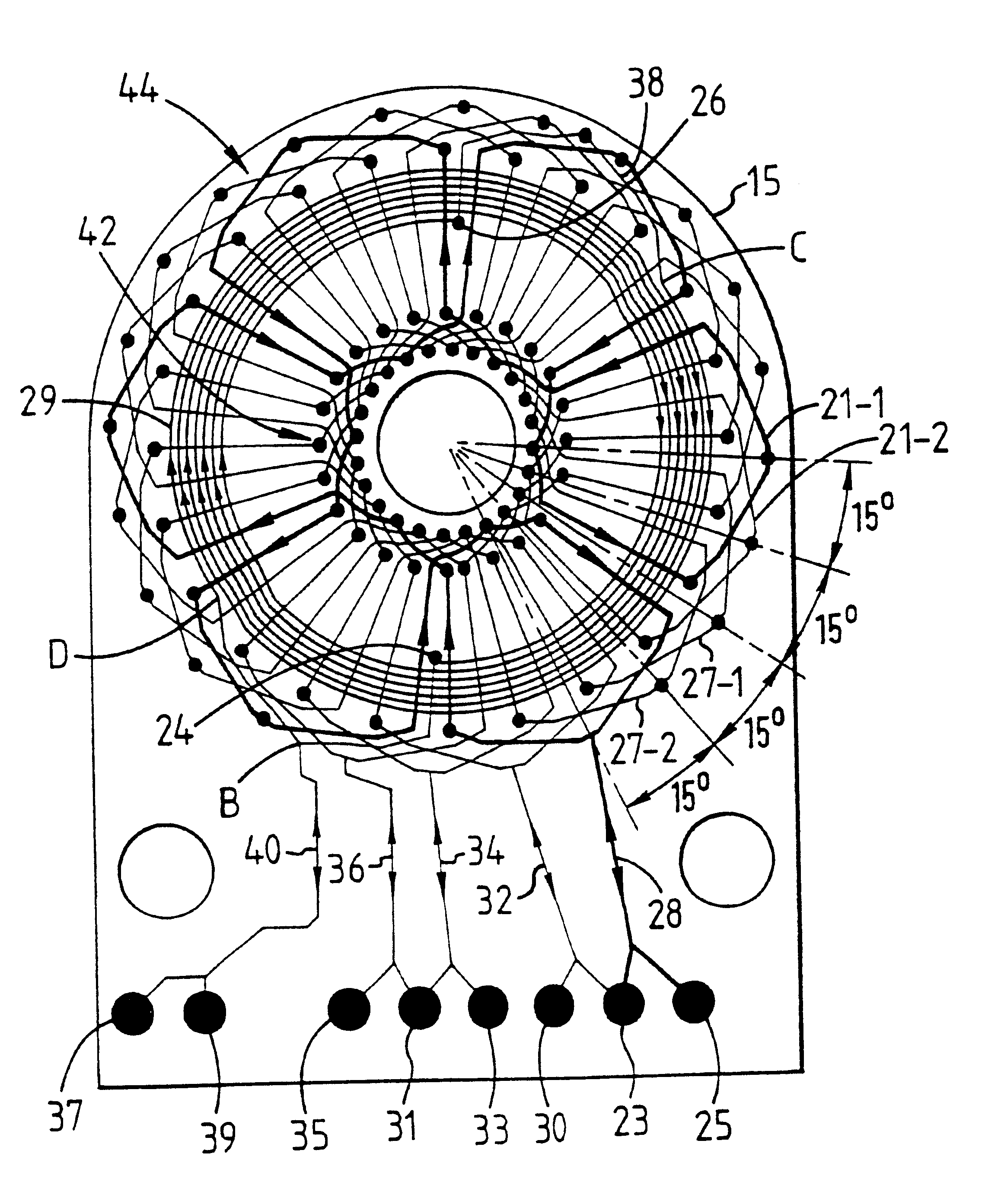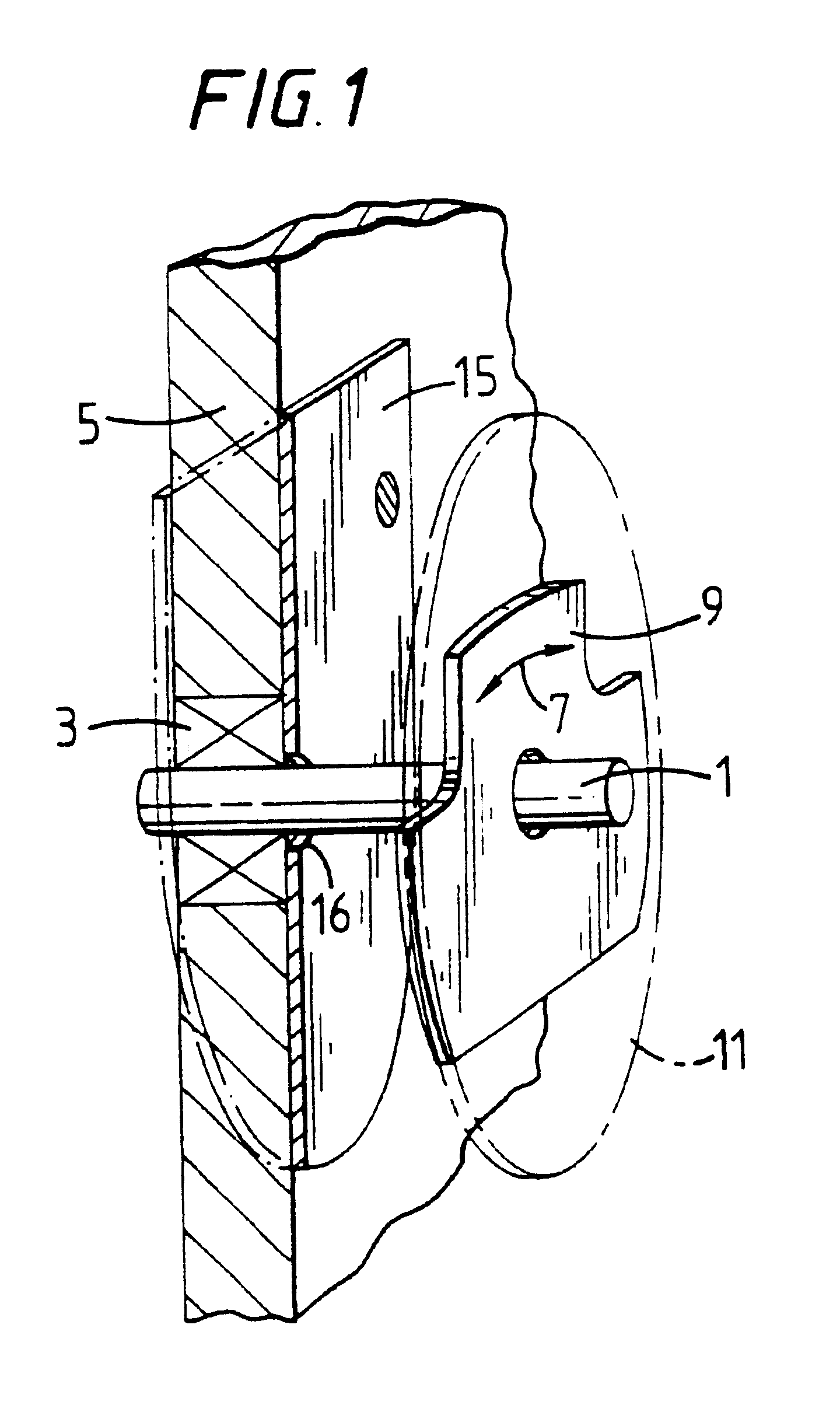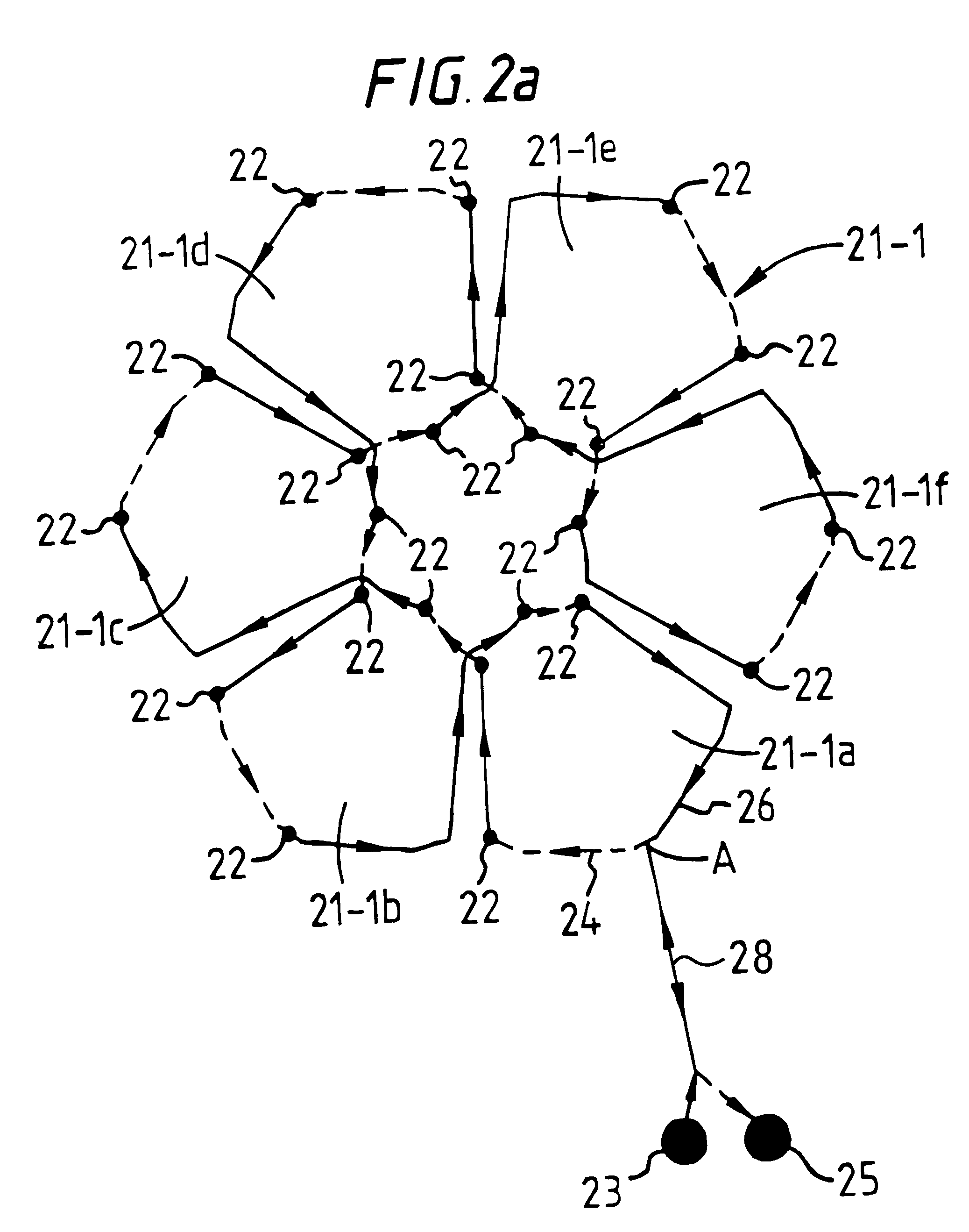Position sensor having compact arrangement of coils
a position sensor and compact technology, applied in the direction of coils, continuously variable inductance/transformers, transmission systems, etc., can solve the problems of reducing and affecting the overall accuracy of the position sensor
- Summary
- Abstract
- Description
- Claims
- Application Information
AI Technical Summary
Benefits of technology
Problems solved by technology
Method used
Image
Examples
Embodiment Construction
FIG. 1 schematically shows a shaft 1 which is rotatable about its axis and which passes through a bearing 3 provided in a support wall 5. A first printed circuit board 9 carrying a resonator (not shown) is mounted for rotation (as represented by arrow 7) with the shaft 1 via bushing 11 next to a second printed circuit board 15 (shown in cross-section) which carries a number of sensor windings (not shown) and an excitation winding (not shown). The second printed circuit board 15 is fixed to the support wall 5 and has a central hole 16 through which the rotatable shaft 1 passes.
The excitation winding, sensor windings and the resonator are arranged such that when an excitation current is applied to the excitation winding, the resonator is energised which induces signals in the sensor windings, the peak amplitudes of which vary sinusoidally with the angle of rotation of the shaft. The sensor windings are connected to processing electronics (not shown) which processes the induced signals...
PUM
 Login to View More
Login to View More Abstract
Description
Claims
Application Information
 Login to View More
Login to View More - R&D
- Intellectual Property
- Life Sciences
- Materials
- Tech Scout
- Unparalleled Data Quality
- Higher Quality Content
- 60% Fewer Hallucinations
Browse by: Latest US Patents, China's latest patents, Technical Efficacy Thesaurus, Application Domain, Technology Topic, Popular Technical Reports.
© 2025 PatSnap. All rights reserved.Legal|Privacy policy|Modern Slavery Act Transparency Statement|Sitemap|About US| Contact US: help@patsnap.com



